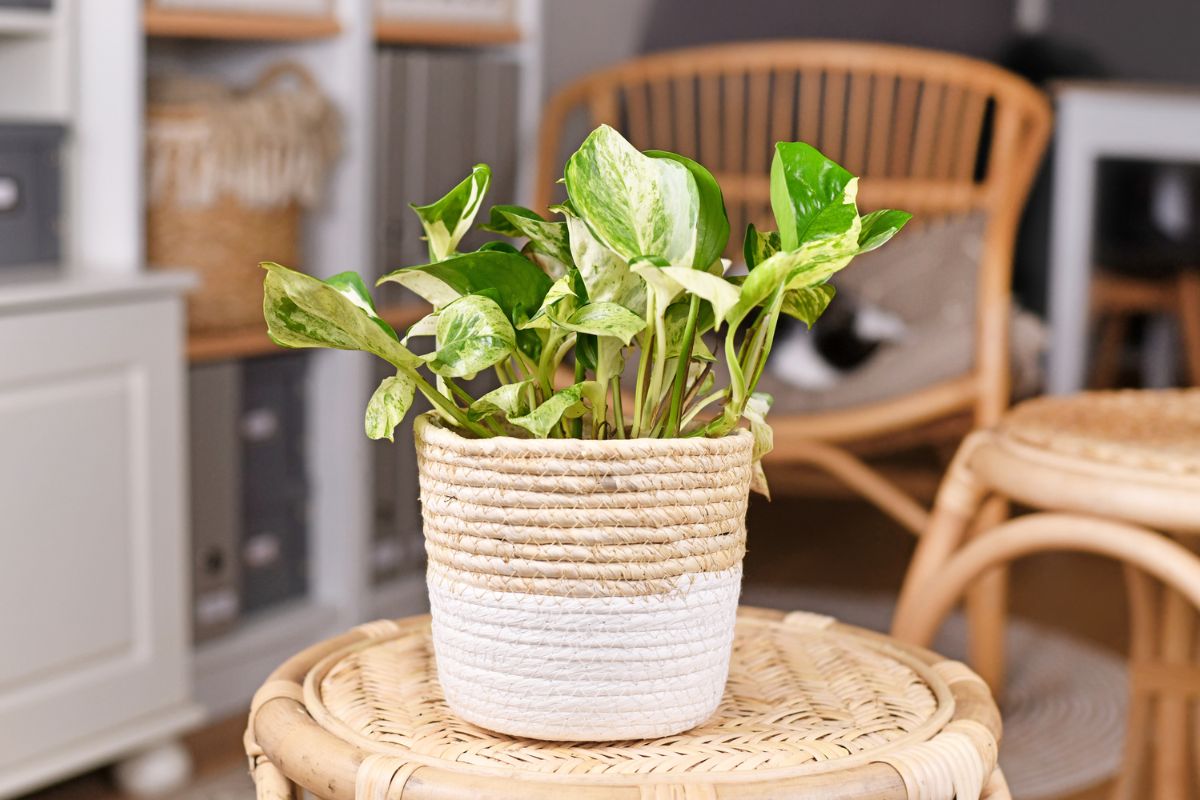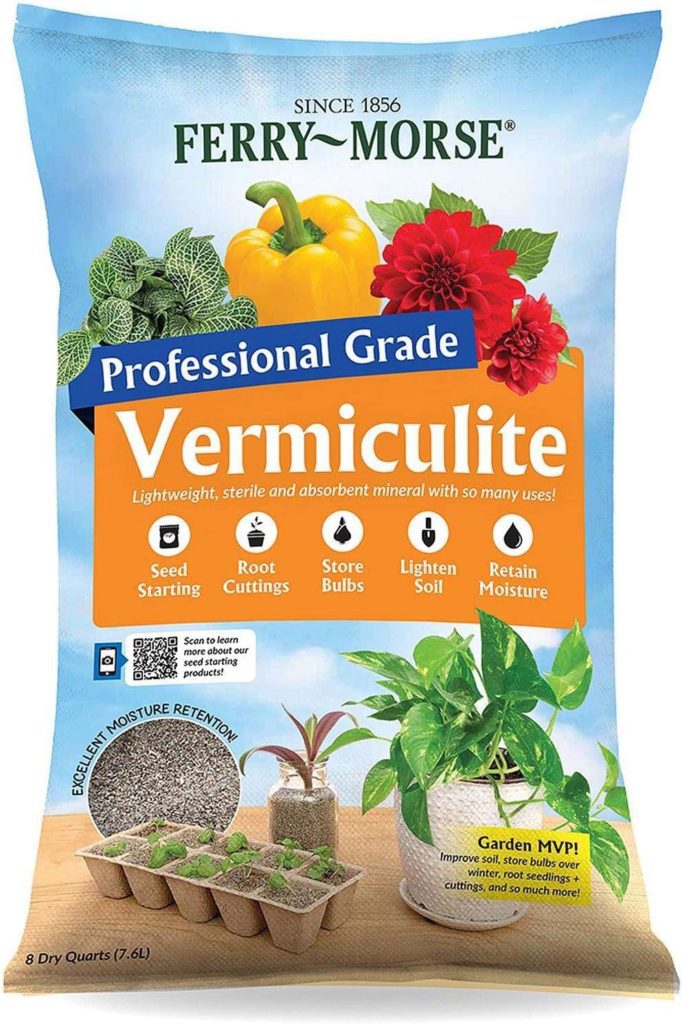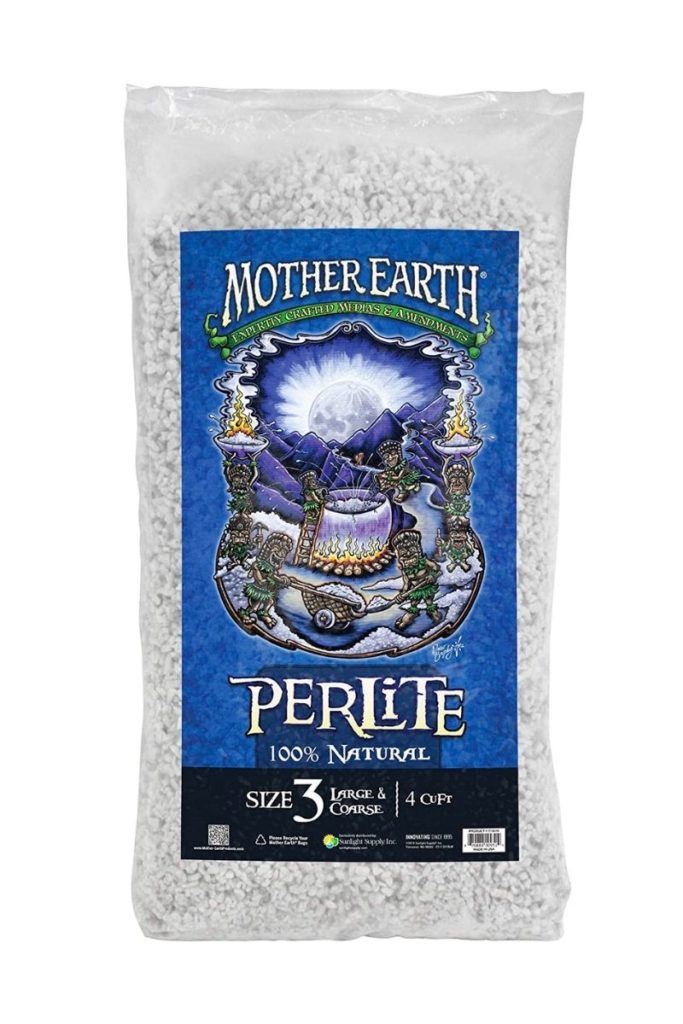Pothos plants are some of the most popular and easiest houseplants to care for, requiring only a little attention every week or two. Overall, a pothos is happiest when left to do its own thing. When it comes to watering, too much moisture can stress a pothos and make it susceptible to root rot. The excess moisture damages the roots, which then can’t nourish the plant’s stems and leaves.
As the pothos weakens, you’ll notice certain signs that may allow you to save the plant before it dies from rotten roots (but once symptoms are visible, some damage has already been done).
Here, we’ll go over those main signs and the best options you have to fix root rot and prevent it in the future.
Signs of root rot in pothos plants
The main cause of root rot in pothos, or any plant for that matter, is overwatering. When there’s too much water in the soil, roots aren’t able to take in nutrients or air from the soil. As they weaken and absorb too much water, becoming saturated, decomposing bacteria and fungi in the soil start to rot the vulnerable roots. Signs of root rot can show up in multiple ways:
- Wilted or yellowing leaves. Your pothos’ leaves will start to turn yellow or brown and start to droop as they are starved of nutrients, oxygen, and moisture when their roots fail to absorb and transport those vital elements to the rest of the plant.
- Dark or mushy roots. On inspection of the roots to assess the damage, rotting roots will have a dark brown or black color, as opposed to the light brown to beige of healthy roots. Mushy roots have absorbed too much water, and they turn black as they rot. An odor may accompany rotting roots that you might notice before or while inspecting the condition of the plant.
- Easily detached roots. The wet, mushy roots will easily detach if they’re dead or dying. The bacteria or fungus that decomposes the organic root material decays and dissolves the tissue, making it easy to pull off with a gentle tug.
- Fungus gnats. Fungal growth in wet soil may attract gnats that feed on the fungus and lay eggs in the soil. The fungus in the soil will eat away at the moist roots for nutrients, further damaging the plant.
- Consistently wet soil. Root rot is essentially caused by the dangerous conditions that excess water creates. Standing water moistens the roots, allows bacteria and fungal growth to eat away at the mushy roots, and prevents absorption of nutrients, moisture, and oxygen that keep your pothos alive.
What causes root rot in pothos plants?
Pothos plants are tropical in origin, from Indonesian rainforests where they grow on tree trunks. Since they get a lot of their moisture from the air all year long, they don’t need large roots to store a lot of water. Instead, they store some moisture in their vines and leaves, so they can go many days without being watered. Its smaller root system leaves pothos plants vulnerable to excess moisture in soil, which can harm the plant more quickly than plants that have more robust roots.
One or more of the following situations may be the cause of pothos root rot:
- Overwatering. Excess water in a pothos’ pot damages the plant by either supporting decomposition, or by drowning it: the moisture softens the roots and exposes them to bacteria or fungi, which then begin to decompose the roots and starve the stems and leaves of the plant. Plants may also be damaged from overwatering when a lack of oxygen from the excess water will prevent the roots from getting the air they need to live.
- Lack of root oxygen. Waterlogged soil doesn’t have the air that plant roots need to survive, whether it’s from compacted soil or overwatering. In nature, pothos roots grow in the upper parts of topsoil, which are well-aerated and drain quickly, yet retain moisture in the absorbent, organic material.
- Poor drainage. If the soil is compacted, or the pot doesn’t have drainage holes, water will accumulate in the pot and saturate the roots. Pots that allow water to drain down and out, on the other hand, allow the roots to breathe.
- Inappropriate pot size. A pot that is too big for your pothos will retain more water than the plant can use. Large pots hold lots of soil, which in turn holds more moisture than small pots. Big pots dry out more slowly, which may create the too-wet conditions that your pothos doesn’t like.
How to save a pothos plant after root rot
If you notice discolored and dropping leaves, fungus gnats, or standing water in the potting soil, you may need to inspect the roots for black coloration or sogginess. To give a full inspection, the pothos should be removed from its pot so that you can check out the condition of the damaged roots.
What you’ll need:
- Small pair of pruning shears
- Fresh, well draining potting soil (mix up your own batch of the best DIY soil for pothos)
- Pot with good drainage and saucer
- Small potting shovel
Step 1: remove the plant from the soil to inspect the roots
The plant should be removed from the wet soil so the roots can be inspected, trimmed as necessary, and repotted in fresh soil. Once the plant is out of the soil, gently remove excess soil to look closely at the pothos’ affected roots and see how extensive the damage is.
Step 2: trim away any signs of root rot, dead leaves, or dead vines
Black, weak roots that are mushy and/or break off easily can be trimmed with your small pruning shears. If the whole root ball has rotted, the plant won’t be able to be saved. However, you may be able to propagate a new plant from a vine cutting if any healthy ones with green leaves remain.
Step 3: plant into new well draining soil
If the plant’s roots aren’t totally damaged, the plant might be able to be saved by planting it in fresh, well-draining potting mix. Solid materials like perlite, gravel, sand, and LECA help move water downwards and out of the pot, while moisture-retaining materials like coco coir, LECA, and worm castings deliver hydration to the roots. Wash the remaining healthy roots with gentle soap.
Step 4: water sparingly until plant comes back to full strength
Your pothos will be in recovery mode for several weeks while the roots repair and regrow. Assess your watering schedule to be sure you’re not overdoing it: once every week or two is enough for healthy plant growth in a pothos; the top two inches of the soil should be dry before watering again. If you notice the soil is wet when you go to water it, hold off a couple of days longer and check again.
How to prevent root rot in your pothos plant
Making sure that your pothos’ growing conditions are suited to their preference for well-draining, moisture-retaining potting soil is the best way to prevent root rot. Some of the best ways to avoid this disease include:
- Well draining pots – the pot your pothos is planted in makes all the difference! Using a well-draining soil mixture will prevent the soil from compacting and/or holding too much water.
- The appropriately sized pot with drainage holes – The size and design of the pot also affects how well, and how long, moisture is retained. A small pot dries out faster than a large pot, which holds more water and takes longer to dry. Pots with drainage holes help move water downwards and out of the pot.
- Water pothos plant sparingly – Pothos get much of their moisture from the air, and they store water in their vines and leaves. This allows them to go longer between waterings, and pothos should only be watered once every week or two, which will vary by each particular plant’s needs.
- Create the best growing conditions – In addition to well-draining soil in an appropriately sized pot, giving your pothos the right amount of humidity (between 50-70%) and lots of indirect light in a well-ventilated area will create the best growing environment for the plant.
- Fertilize for healthy roots – Pothos plants are from the rainforest floor, and they appreciate being fertilized a couple of times a year. A healthy plant will be better at staving off diseases like root rot if conditions become stressful, and may be more likely to survive if the roots are afflicted by the bacterial or fungal infection.
The bottom line
Although neither is advised, underwatering is better than overwatering a pothos: they can’t handle too much water and may succumb to root rot more quickly than other plants with heartier roots. A pothos is an independent plant, one of the easiest to care for since, with the right conditions, it likes to be left alone for a while between waterings. The right watering schedule and a well-draining growing environment will keep your pothos happy, healthy, and free from rot!
More about pothos
- How Often To Water Pothos Plants (And When To Cut Back)
- Marble Queen Pothos Care Guide
- How To Make Pothos Fuller (In 5 Minutes)
- Our top pothos fertilizer picks for luscious vines
- Golden Pothos plant care: how to keep them happy
- Pothos root rot: what to look for and how to fix it
- How to grow pothos in water for *decades*





